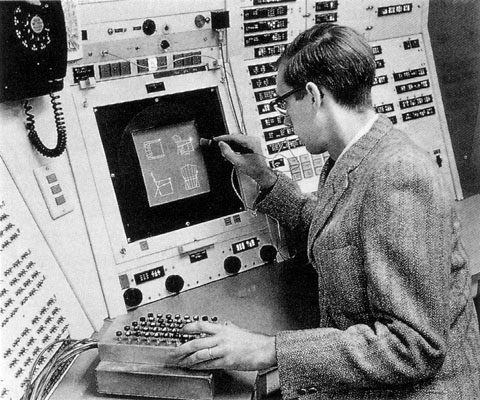
1963 - The first Sketchpad was introduced
Sketchpad ran on the Lincoln TX-2 computer, an innovative machine designed in 1956 (it had a large amount of memory for its time: a vacuum-tube-driven core of 64K words, a faster, transistor-driven core of 4K words, a paper-tape reader and could also use magnetic tape as auxiliary storage.) TX-2 was an “on-line” computer (at that time most computers would run “batches” of jobs and were not interactive), used to investigate the use of Surface Barrier transistors for digital circuits. TX-2 included a nine inch CRT and a light pen which first gave Sutherland his idea. He imagined that one should be able to draw on the computer. Sketchpad was able to do just this, creating highly precise drawings, and also introduced important innovations such as memory structures to store objects and the ability to zoom in and out.
(Image source: “Sketchpad-Complete History of the Sketchpad Computer Program,” History Computer: The HIstory of Computing. Accessed 10/11/2020 https://history-computer.com/ModernComputer/Software/Sketchpad.html.)

